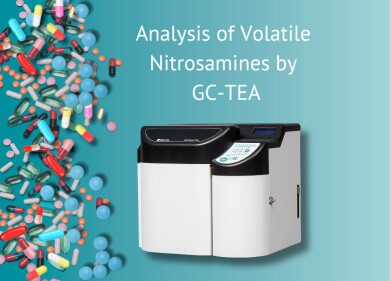Gas chromatography
Chromatography Assesses Ethiopia's Medicinal Plants
Dec 19 2019
Plants have long been used as medicines. Whether it is as home remedies, from a pharmacy or used as a raw material in the pharmaceutical industry - plants have contributed substantially to the global market in medicines. A recent paper published online has looked at the role medicinal plants play in Ethiopia and how chromatography is helping to provide quality control in an industry that can mean the difference between life and death for some people.
Medicines of the past
Medicinal plants are vital for their contribution to global healthcare - it could be argued that they provide the primary means for fighting infection and treating diseases. This is not a new phenomenon. The first written text mentioning the use of medicinal plants is thought to be Sumerian in origin and dates from some 4000 years ago.
The Egyptians used medicinal plants in a controlled way and had over 700 different formulations using medicinal plants. The tradition was carried on by the Greeks and Romans - with the Greek physician Hippocrates introducing the use of plants in preventative medicine - with the saying ‘Let your food be your medicine and your medicine be your food’ attributed to Hippocrates.
Medicinal plants helping to keep us healthy
With over 64% of the global population reliant on traditional medicine for their healthcare needs - it is estimated by the World Health Organization that almost 3.5 billion people in developing countries rely on plant-based remedies. In Ethiopia, almost 80% of the population rely on traditional medicine - meaning that medicinal plants are in high demand in Ethiopia particularly in the low-income and rural communities.
But as with many traditional parts of culture - the basic knowledge around traditional medicinal plants is held by local and elder people, and the knowledge about medicinal plants was passed on verbally. But such verbal transmissions have resulted in eroded and lost knowledge on both the plants used and their uses as medicines.
Quality plants in Ethiopia
The team behind the review report that as well as lost knowledge, there are major threats to medicinal plants through habitat loss, urbanization and agricultural expansion. So, it is important to put into place conservation mechanisms to help to preserve both the knowledge base as well as the plants themselves. They conducted a thorough review based on type of plant, use of plant and the ecology surrounding the plant’s habitat to see what pressures were on the medicinal plants.
They also assessed the use of chromatography - both gas chromatography and thin layer chromatography - as a means to carry out quality control on medicinal plants. The use of chromatography to analyse medicines is the topic of this article, Screening of Western Drug Adulterants in Complementary Health Products by High Performance Liquid Chromatography/Diode Array Detection/Mass Spectrometry. The importance of chromatography in helping to keep the medicinal plants of Ethiopia safe for future generations is also discussed.
Events
May 11 2025 Vienna, Austria
May 18 2025 Tempe. AZ, USA
May 21 2025 Birmingham, UK
Jun 01 2025 Baltimore, MD, USA
Jun 15 2025 Bruges, Belgium


.jpg)











